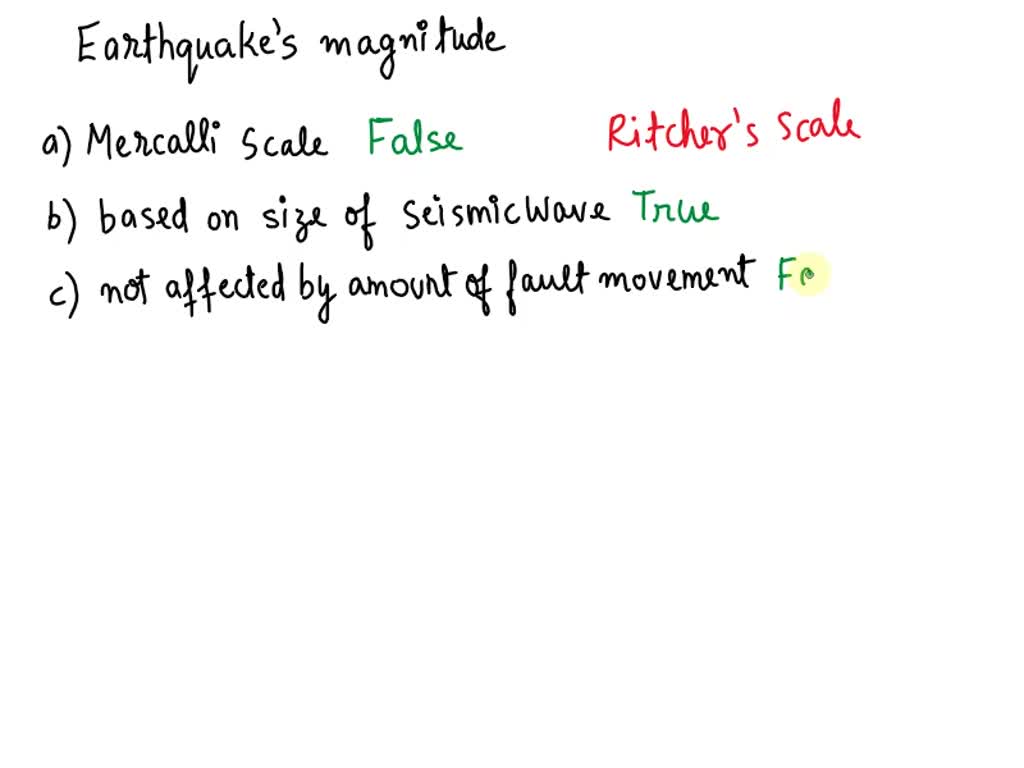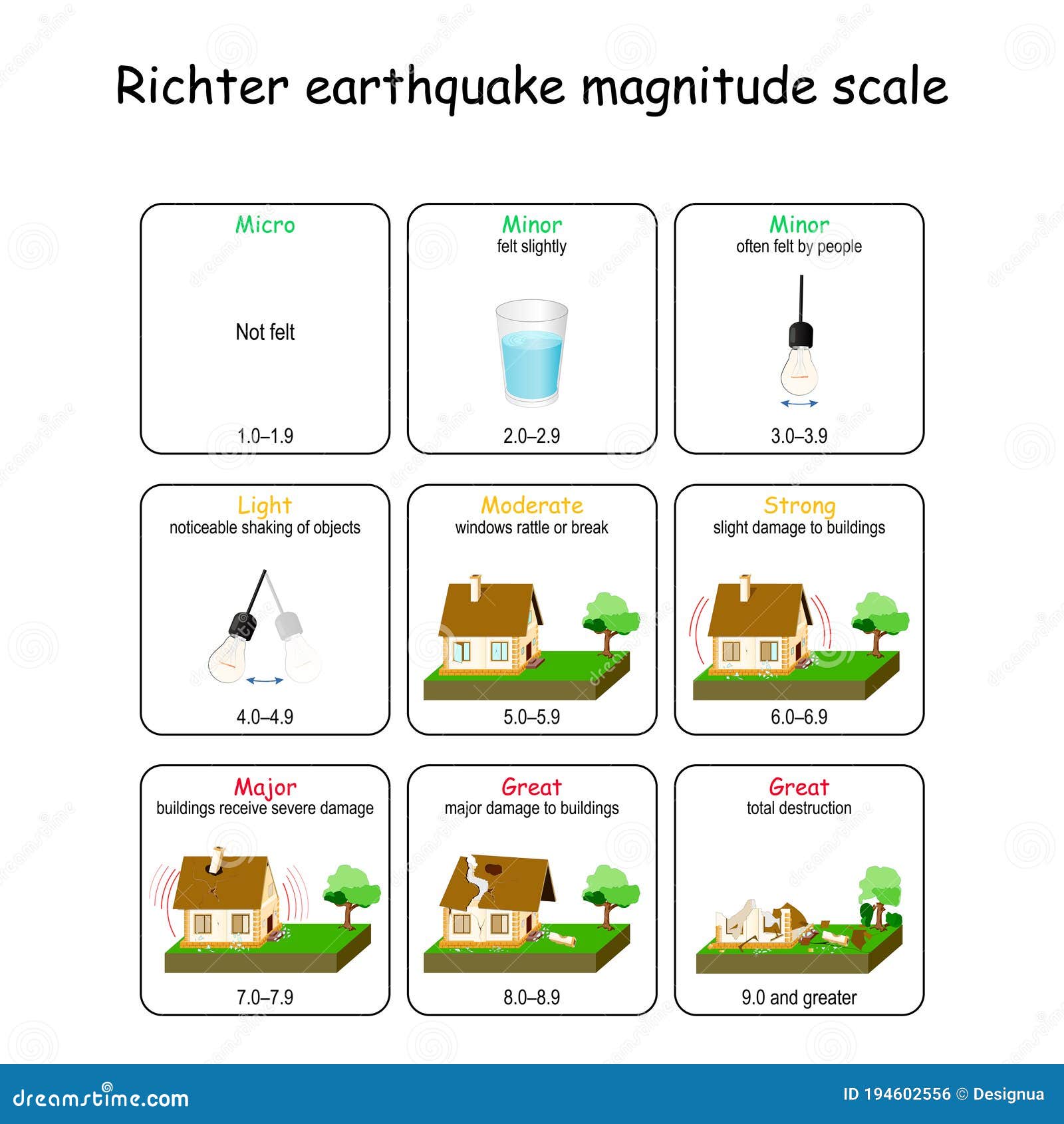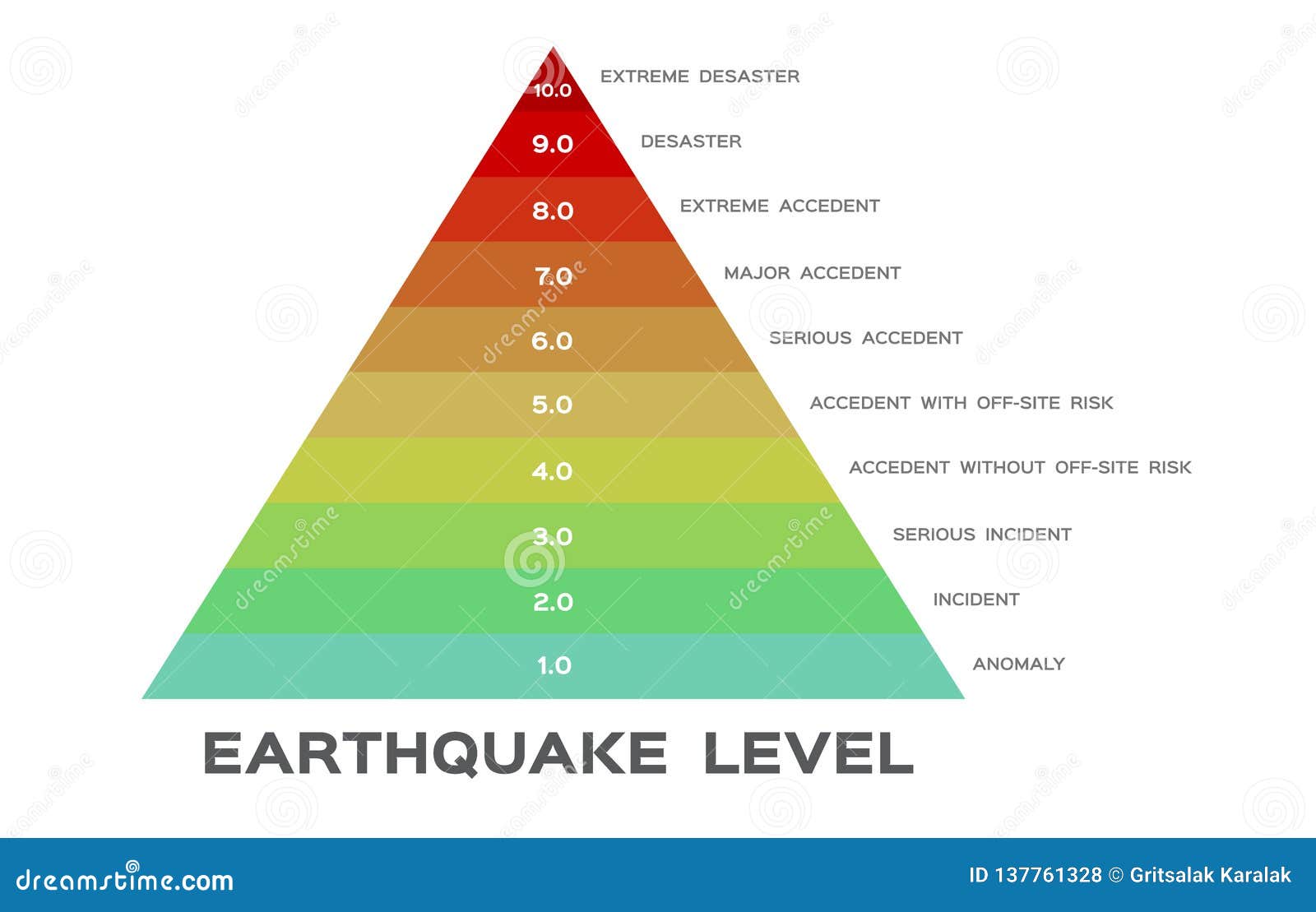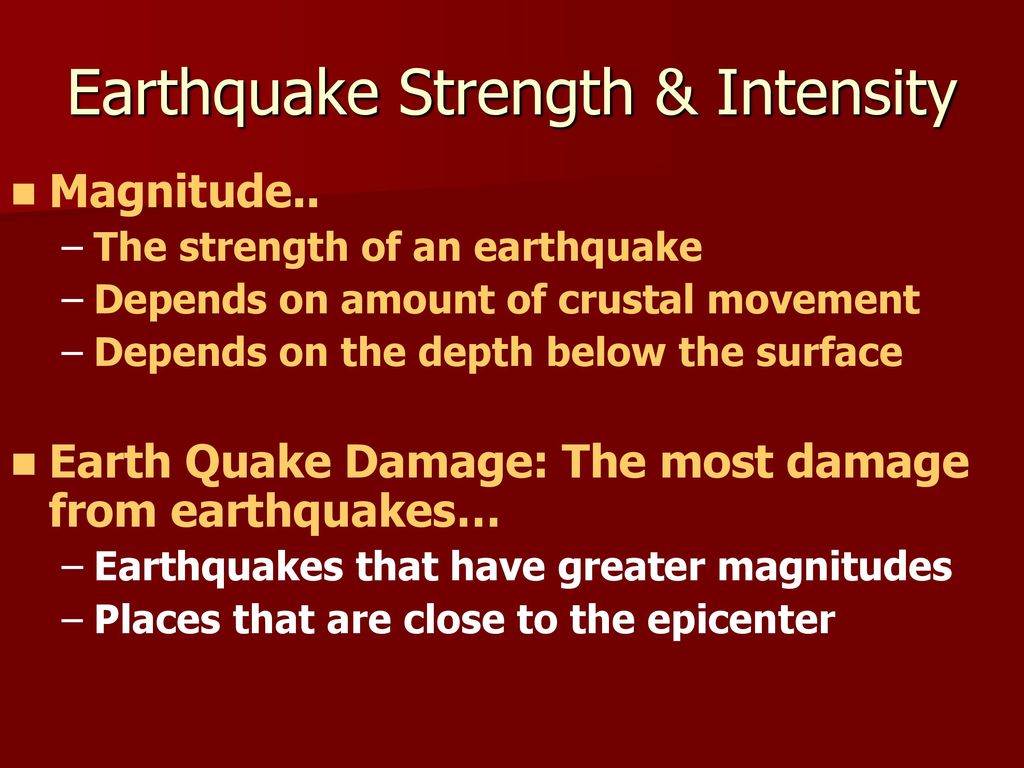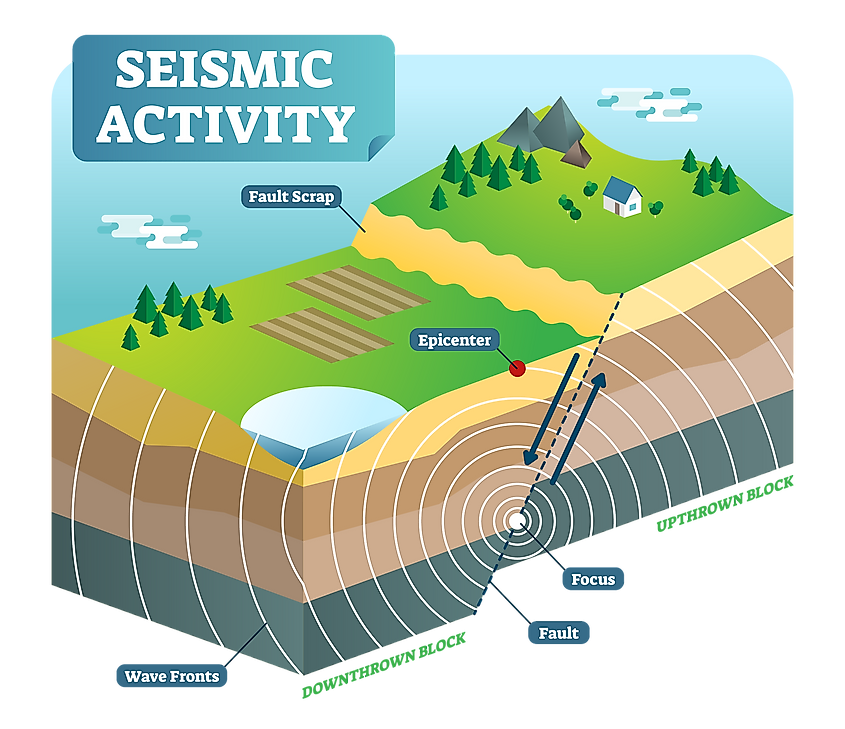Which Statement Describes One Aspect Of An Earthquake's Magnitude
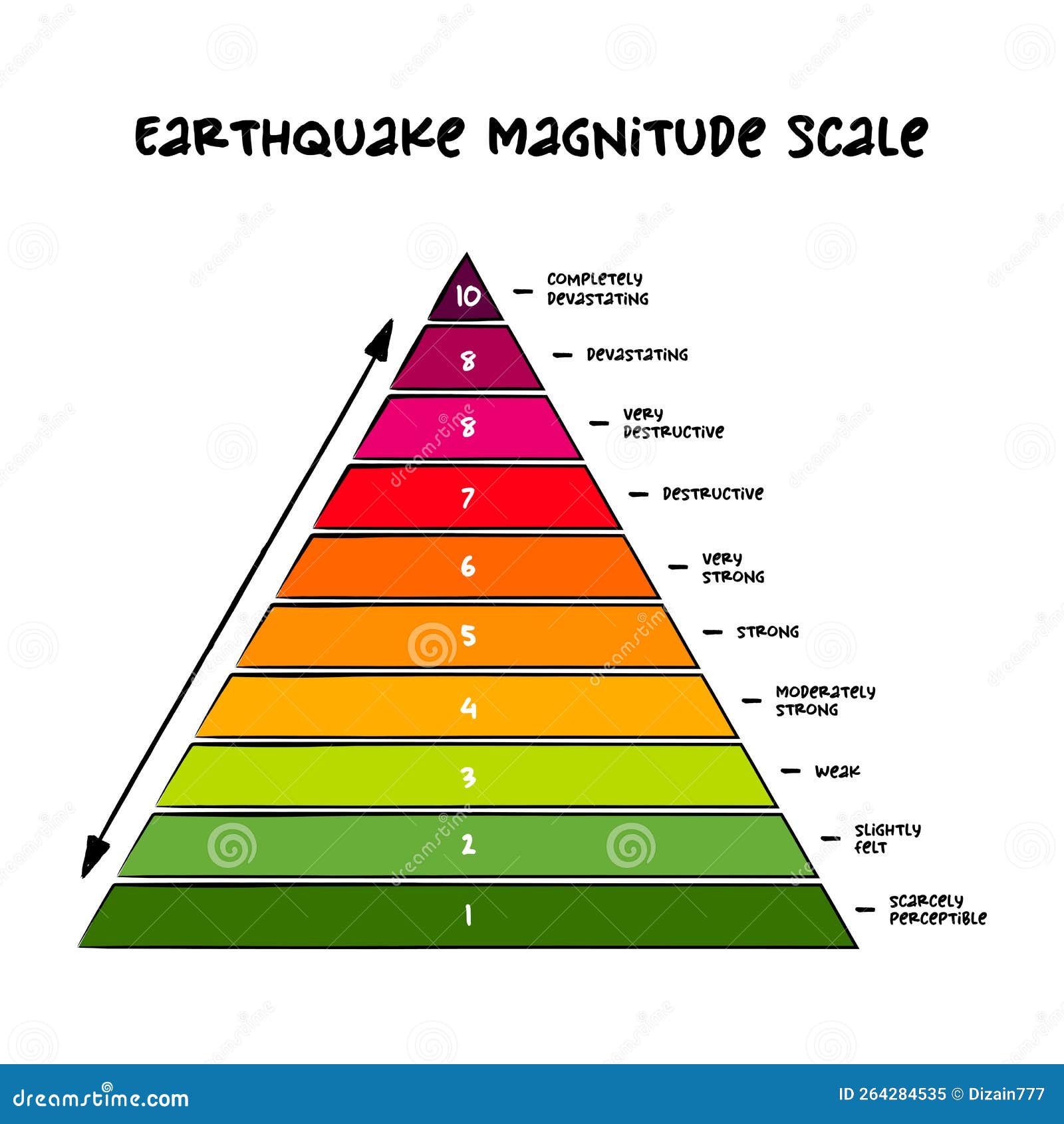
The earth trembles, buildings sway, and the ground beneath our feet betrays its solid facade. These are the terrifying hallmarks of earthquakes, forces of nature capable of reshaping landscapes and claiming lives in mere minutes. While the visceral experience leaves an indelible mark, understanding the science behind these events, particularly the nuances of measuring their magnitude, is crucial for preparedness and mitigation efforts.
At the heart of this understanding lies the concept of magnitude, a single number intended to represent the overall size or energy released by an earthquake. But what exactly does this number signify? Several statements attempt to describe an earthquake's magnitude, but only one accurately captures a key aspect: the measure of the seismic waves' amplitude recorded by seismographs, adjusted for distance from the epicenter. This article will delve into the intricacies of earthquake magnitude, exploring its definition, measurement, and significance, while debunking common misconceptions.
Understanding Earthquake Magnitude
Earthquake magnitude is not simply a measure of the shaking felt at a particular location, nor is it directly proportional to the damage caused. Instead, it's a logarithmic measure of the amplitude of seismic waves radiated from the earthquake's source, adjusted to account for the distance between the seismograph and the earthquake's epicenter.
This distinction is critical because shaking intensity and damage can vary significantly based on factors like local soil conditions, building construction, and the depth of the earthquake, independent of the overall energy released.
The Richter Scale and Beyond
The most well-known magnitude scale is the Richter scale, developed by Charles F. Richter in 1935. The Richter scale, while revolutionary for its time, is limited in its applicability.
It is best suited for shallow, local earthquakes and is not accurate for large earthquakes or those at great distances. For larger earthquakes, seismologists now commonly use the moment magnitude scale (Mw), which provides a more accurate and consistent measure of the total energy released.
The moment magnitude scale is based on the seismic moment, which is a measure of the area of the fault that ruptured, the amount of slip on the fault, and the rigidity of the rocks.
How Magnitude is Measured
Seismographs are the primary instruments used to record ground motion caused by earthquakes. These sensitive devices detect and amplify seismic waves, creating a visual record of the earth's movement.
The amplitude of these waves, which represents the maximum displacement of the ground, is a key factor in determining magnitude. However, the amplitude alone is not enough.
The distance between the seismograph and the earthquake's epicenter must also be considered. Seismic waves weaken as they travel through the earth, so the measured amplitude must be corrected to account for this distance-related attenuation.
Once the amplitude is corrected for distance, it is converted to a magnitude value using a logarithmic scale. This means that each whole number increase in magnitude represents a roughly tenfold increase in the amplitude of the seismic waves and approximately a 32-fold increase in the energy released.
Debunking Misconceptions
One common misconception is that a magnitude 6 earthquake is twice as strong as a magnitude 3 earthquake. This is incorrect because the scale is logarithmic.
A magnitude 6 earthquake is actually 1,000 times larger in amplitude and releases about 32,000 times more energy than a magnitude 3 earthquake.
Another misunderstanding is that magnitude directly correlates with damage. While larger magnitude earthquakes generally cause more widespread damage, other factors, like building codes and population density, play a significant role.
"The magnitude is a measure of the earthquake's size at its source. Intensity is a measure of the shaking at a particular location," explained Dr. Emily Carter, a seismologist at the U.S. Geological Survey (USGS).
The Significance of Magnitude
Earthquake magnitude is a fundamental parameter used by scientists to understand the processes that drive earthquakes and to assess seismic hazard. By analyzing patterns of earthquake occurrence and their magnitudes, scientists can estimate the likelihood of future earthquakes in a given region.
This information is used to inform building codes, land-use planning, and emergency preparedness efforts, all of which are aimed at reducing the risk of earthquake-related disasters.
Understanding magnitude is crucial for effective communication about earthquake risks. It provides a standardized way to compare the size of different earthquakes and to communicate the potential for damage to the public.
Looking Ahead
Seismology is a constantly evolving field, with new technologies and techniques being developed to improve our understanding of earthquakes. Researchers are working to refine magnitude scales, develop more accurate methods for locating earthquakes, and improve our ability to forecast future seismic activity.
One promising area of research is the use of artificial intelligence and machine learning to analyze large datasets of seismic data. These technologies could help to identify subtle patterns and anomalies that could provide early warning signs of an impending earthquake.
Ultimately, a deeper understanding of earthquake magnitude and its relationship to other earthquake parameters will lead to more effective strategies for mitigating the risks posed by these powerful natural events. By embracing science and investing in preparedness, we can build more resilient communities and protect lives from the devastating impact of earthquakes.
